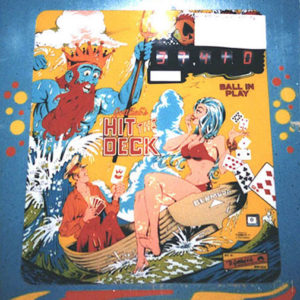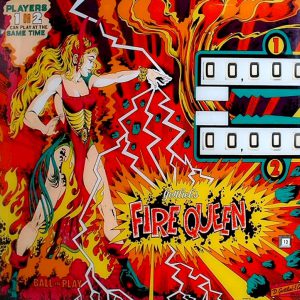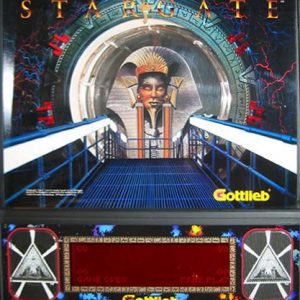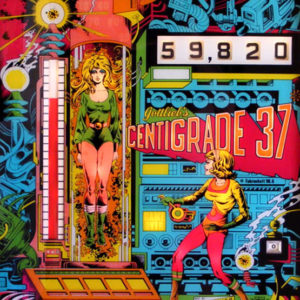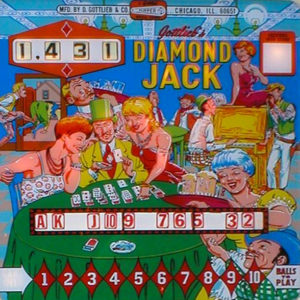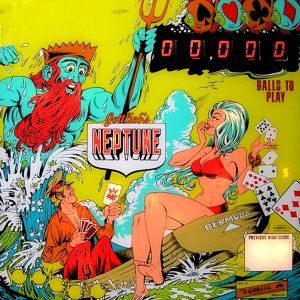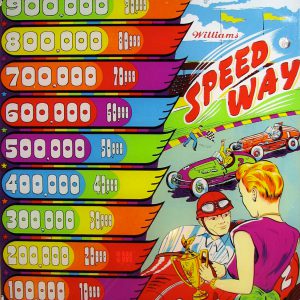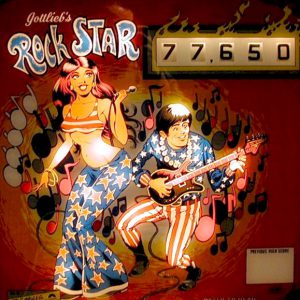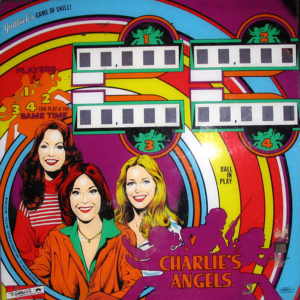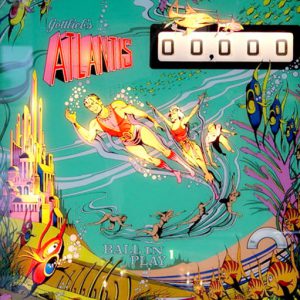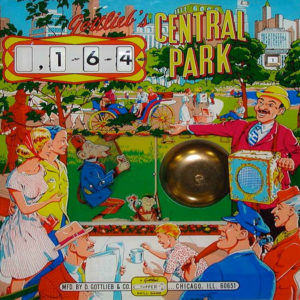-
This replay game came out in December of the year with a four-player replay version (Vulcan) being released two months prior. 970 units were produced. Ed Krynski designed the game with Gordon Morison taking the credit for artwork. Two sets of drop targets in the firing range of the flippers make for a lot of accurate target shooting. Lighting all four green drop targets lights the extra ball target. The bonus value is doubled by hitting the bank of five drop targets. Making one to five numbered sequence lights two rollovers for a special as well as increases the white drop target value to three bonus advances. The kickout hole awards from 1,000 to 5,000 points dependent on the number of green drop targets hit at that moment in time. All in all, a nicely balanced game. Bonus is awarded upon draining the ball also.This game scores as the #10 most desirable game of the ’70s. It came out in August, designed by Ed Krynski and Allen Edwell with artwork by Gordon Morrison. Backbox animation is included in the game. A giant thermometer advances when drop targets are hit and by rolling over the rollovers. If the thermometer is advanced to the top, the special lights on the eject hole. A, B, C and D rollovers, if hit, advances the thermometer 5 advances. If a player completes all the letters, he gets 5,000 points in the eject hole. A double bonus feature is present also. All in all, a very fast-paced game. Artists, as a general rule, didn’t help design playfields. They were given the game mechanically more or less completed and had to invent the graphics and theme on their own.This rare add-a-ball game was released in April. It was designed by John Osbourne with artwork by Gordon Morison. A minimal total of 270 units were soldered together at the time. This is a small number for a pinball run. The replay version had a much larger production and the name of that game was Hit The Deck. As you can see from the backglass, Gottlieb tried to experiment with a score reel that was completely different in coloring. This was to attract attention to the game and attract quarters. The object of the game is to roll over the red number and/or black number sequence inherent in the game. If you are skillful enough to get the 9 to Ace sequence, some wow options will light up to score extra balls. A kickback feature is incorporated into the game in the upper-left area. This single-player game is challenging and a rare sight to see.The game before you is extremely rare with only 278 screwed together at the Chicago Gottlieb factory. This one-player electromechanical add-a-ball game was designed by John Osbourne with art by Gordon Morison. A replay version was also designed by the name of Blue Note. The object of this machine is to complete all the notes down the left side of the playfield. Doing so activates the classic “wow” feature which, when hit, awards one free ball. A reset is in your future once your current ball drains. Score is another way to achieve longer play by winning extra balls. The spinner in the middle of the playfield awards big points when 1,000 points is lit; each spin of the target awards 1,000 points plus number of revolutions spun. A nice retro art package completes this rare machine.This game by Gottlieb is a very challenging design. It was invented by Ed Krynski and artwork was drawn by Gordon Morrison. This game has 10 drop targets lined up the left side of the playfield. If one target is hit, one scores 500 points. If, however, you’re skillful enough to hit a blue and white target at the same time, 5,000 points are awarded. Completing the sequence 1-9 lights the special at the bottom left rollover as well as lights the drop targets to score a special if all the targets are dropped. The player had to be wary when trying to freeze the ball on the right flipper, as one could lose the ball up the right guide rail (which has an opening in it the size of a ball). This playfield design was used a few times by Gottlieb, as it was a successful design (games like Gottlieb 300, for example, a bowling themed game). Scoring games by core were another option.
HOURS SUBJECT TO CHANGE! | Sun–Thurs: Noon–12am • Fri-Sat: Noon-2am | 19 NE 3rd Ave., Delray Beach, FL 33483 | (561) 266-3294 | Email Club



